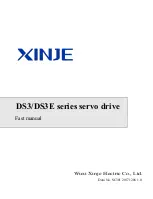
Design Note HFDN-18.0 (Rev.1; 04/08)
Maxim Integrated Products
Page 2 of 9
The MAX3865 Laser Driver with
Automatic Modulation Control
1 Introduction
Laser diodes for telecommunication applications are
characterized by two principal parameters:
•
The threshold current, I
th
, which can be defined
as the minimum current through the laser diode
that will support stimulated emission of photons
(resulting in coherent optical output). Laser
current levels below the threshold current result
in low-level spontaneous emission (non-
coherent optical output). See Figure 1.
•
The slope efficiency, S, is the gradient of optical
power output versus current input above the
threshold as defined in Equation (1).
.
)
(
)
(
current
input
laser
d
output
power
optical
d
S
=
(1)
In actual use, the maximum and minimum drive
currents, I
max
and I
min
, should be chosen so that the
average optical power output, P
av
, (see Equation (2))
is adequate for the application, and so that the
extinction ration, r
e
, (Equation (3)) is as large as
possible:
2
min
max
P
P
P
av
+
=
(2)
.
min
max
P
P
r
e
=
(3)
Attempting to obtain a large but controlled
extinction ratio is ultimately the source of many
problems with practical laser drivers. On the one
hand the laser must never operate below the
threshold current, because this will cause an
unpredictable start-up delay and a poor waveform
(due to relaxation oscillation), in addition to
increased noise and degraded laser spectral
properties (“chirp”). On the other hand, laser
characteristics are somewhat variable from one to
the next, and in any case they vary with temperature
and age.
For example, suppose we have set up a laser driver
with appropriate values of I
max
and I
min
to achieve
desired values for P
av
and r
e
, using the nominal laser
characteristic (a) in Figure 1. Now suppose the
actual laser characteristic is different from nominal.
We will consider two cases:
Case 1. The laser slope efficiency is reduced, but the
threshold is unchanged (this could be the result of
initial manufacturing tolerances, or of a temperature
change, or it could occur over a period of time as the
laser ages). Referring to characteristic (b) in Figure
1, it is obvious that the maximum, minimum, and
average optical power output levels are lower than
the intended set-up levels, while the extinction ratio
is unchanged. The system will probably remain
usable, but the signal-to-noise ratio and bit error rate
are degraded.
Figure 1. Characteristics of a typical dc-coupled
communications laser diode. The horizontal
axis represents current flowing into the laser,
and the vertical axis represents optical
output power (or equivalently, monitor-diode
current since this is proportional to optical
output power).



























